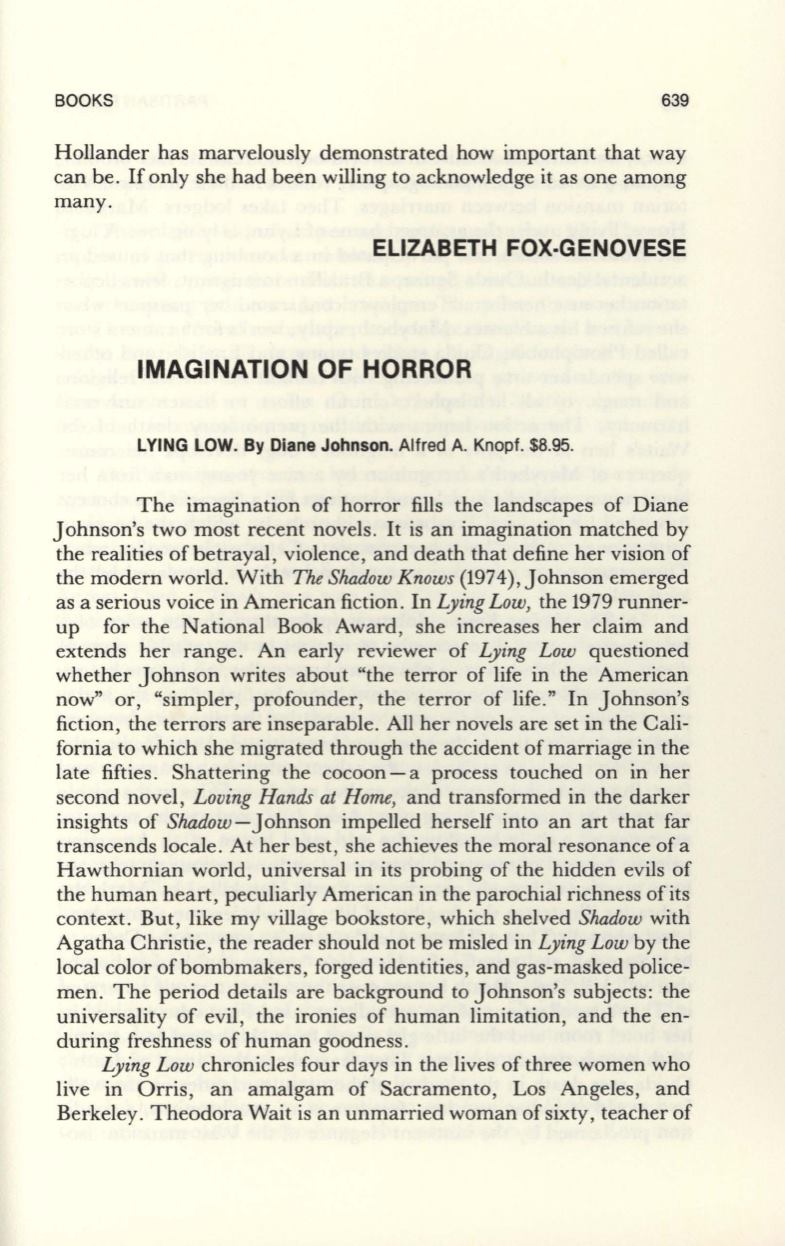
BOOKS
639
Hollander has marvelously demonstrated how important that way
can be.
If
only she had been willing to acknowledge it as one among
many.
ELIZABETH FOX·GENOVESE
IMAGINATION OF HORROR
LYING LOW. By
Diane Johnson.
Alfred A. Knopf. $8.95.
The imagination of horror fills the landscapes of Diane
Johnson's two most recent novels.
It
is an imagination matched by
the realities of betrayal, violence, and death that define her vision of
the modern world. With
The Shadow Knows
(1974), Johnson emerged
as a serious voice in American fiction . In
Lying Low,
the 1979 runner–
up for the National Book Award, she increases her claim and
extends her range. An early reviewer of
Lying Low
questioned
whether Johnson writes about "the terror of life in the American
now" or, "simpler, profounder, the terror of life ." In Johnson's
fiction, the terrors are inseparable . All her novels are set in the Cali–
fornia to which she migrated through the accident of marriage in the
late fifties . Shattering the cocoon - a process touched on in her
second novel,
Loving Hands at Home,
and transformed in the darker
insights of
Shadow
-
Johnson impelled herself into an art that far
transcends locale. At her best, she achieves the moral resonance of a
Hawthornian world, universal in its probing of the hidden evils of
the human heart, peculiarly American in the parochial richness of its
context. But, like my village bookstore, which shelved
Shadow
with
Agatha Christie , the reader should not be misled in
Lying Low
by the
local color of bombmakers, forged identities , and gas-masked police–
men. The period details are background to Johnson's subjects: the
universality of evil, the ironies of human limitation, and the en–
during freshness of human goodness.
Lying Low
chronicles four days in the lives of three women who
live in Orris, an amalgam of Sacramento, Los Angeles, and
Berkeley. Theodora Wait is an unmarried woman of sixty, teacher of


